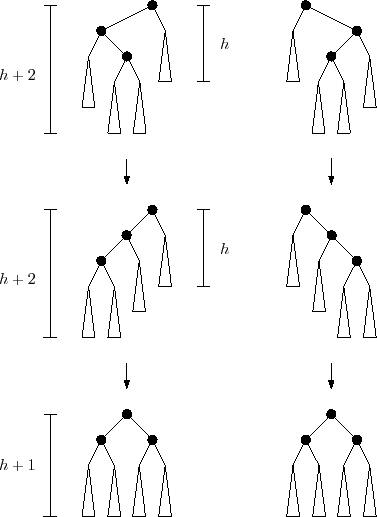Next: 10. Heaps Up: 9. Red-Black Trees Previous: 9.3 Summary Contents
Red-black trees were first introduced by Guibas and Sedgewick [32]. Despite their high implementation complexity they are found in some of the most commonly used libraries and applications. Most algorithms and data structures discuss some variant of red-black trees.
Andersson [4] describes a left-leaning version of balanced trees that are similar to red-black trees but have the additional constraint that any node has at most one red child. This implies that these trees simulate 2-3 trees rather than 2-4 trees. They are significantly simpler, though, than the RedBlackTree structure presented in this chapter.
Sedgewick [57] describes at least two versions of left-leaning red-black trees. These use recursion along with a simulation of top-down splitting and merging in 2-4 trees. The combination of these two techniques makes for particularly short and elegant code.
A related, and older, data structure is the AVL tree [2].
AVL trees are height-balanced: At each node ![]() , the height
of the subtree rooted at
, the height
of the subtree rooted at
![]() and the subtree rooted at
and the subtree rooted at
![]() differ by at most one. It follows immediately that, if
differ by at most one. It follows immediately that, if ![]() is the
minimum number of leaves in a tree of height
is the
minimum number of leaves in a tree of height ![]() , then
, then ![]() obeys the
Fibonacci recurrence
obeys the
Fibonacci recurrence

|
Andersson's variant of red-black trees, Sedgewick's variant of red-black
trees, and AVL trees are all simpler to implement than the RedBlackTree
structure defined here. Unfortunately, none of them can guarantee that
the amortized time spent rebalancing is ![]() per update. In particular,
there is no analogue of Theorem 9.2 for those structures.
per update. In particular,
there is no analogue of Theorem 9.2 for those structures.